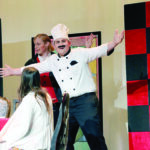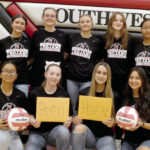Michelle Hilburn: Librarians are on the front lines of literacy

The school year is quickly approaching, which means children are enjoying their last days of summertime and parents are preparing to send them back to school.
As a school librarian, this is a very busy time of year, and I have already returned to work. This means that I am busy preparing the library environment for the return of students which entails cleaning, rearranging books, creating displays, processing books into the library catalog, updating student information in our library software, completing purchase orders, and so much more.
All of these tasks help to create a library environment that supports student learning.
Society often views the role of a librarian as unnecessary to student success. Many believe that librarians just sit and read all day and once in a while check a book out.
However, school libraries are bustling places full of student activity and a school librarian is the heart of that environment.
Elementary librarians often teach classes each day. Library classes may be included in the special class rotation which means students come to the library for class during their teacher’s plan period.
Librarians read books to students and model reading skills. They engage students in learning activities that support grade level skills.
Librarians also lead students in activities that promote digital citizenship and instruct students who are learning how to research. These are formative years for young readers and librarians contribute greatly to a student’s attitude toward reading and books.
Middle and high school librarians guide older students to books that peak students’ interest and help them make connections to books. They provide instruction and guidance to students during the research and writing process.
The impact of a librarian as educational support to teachers and students in the middle and high school setting is immeasurable.
School librarians also have to balance library budgets, research books to purchase, fundraise by hosting book fairs, attend professional development events, and communicate with various members of the school community through social media and newsletters. They are often given extra duties throughout the day such as lunch and bus duty.
As many teachers do, they often serve on committees and are involved in civic organizations that help support students and the school community.
Despite the educational support a school librarian provides, many schools are reducing library budgets or eliminating librarian positions altogether. EveryLibrary, a non-partisan, pro-library organization, recently reported that only 30% of American schools have certified school librarians.
In April 2024, the Center for American Progress reported that 60 studies over the past 50 years connect student academic success to school libraries that are given ample resources and support.
NPR reported in June 2023 that student math and reading scores were the lowest in decades. EveryLibrary states that this trend is contributing to high levels of adult illiteracy which contributes to almost every socio-economic issue in America and is estimated to cost American taxpayers billions of dollars each year.
Author Lailah Gifty Akita described a library as “a gateway to wisdom and knowledge.” Knowledge is power and with knowledge comes opportunities for academic and personal success.
A low literacy rate means that many adults do not have the necessary knowledge to succeed in today’s world.
Librarians work tirelessly to help ensure that students meet their learning goals.
However, the contributions school librarians make to a school district and to student performance are not often recognized.
It is imperative that our educational system does more to support school librarians and school libraries.
Librarians are on the front line of fighting illiteracy and they need supporters to aid them in this fight.
Michelle Hilburn is the president of the Cassville Area Friends of the Library and a librarian at Purdy schools. She may be reached at [email protected].






